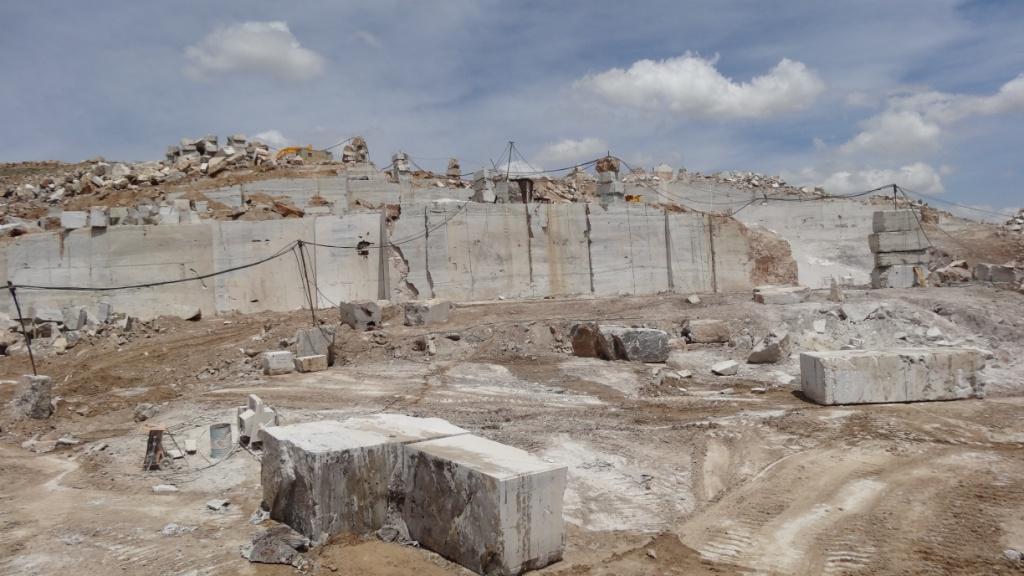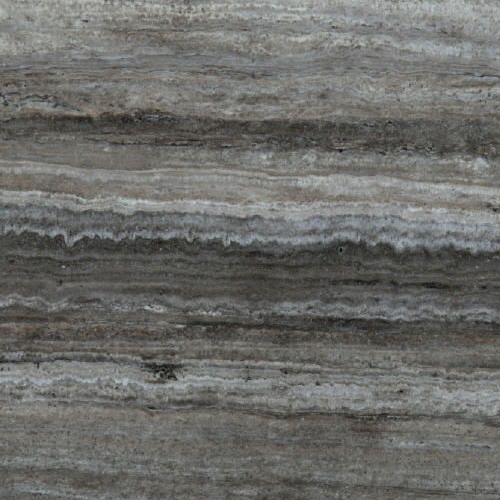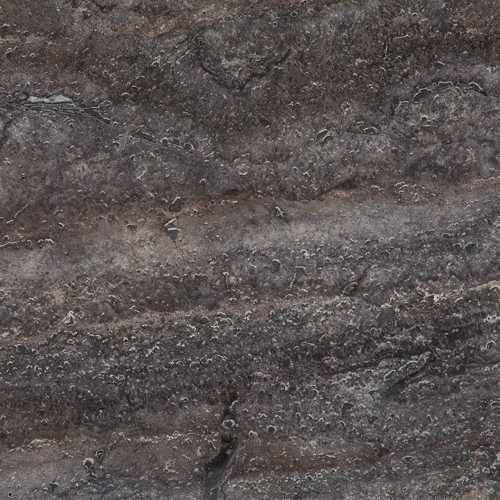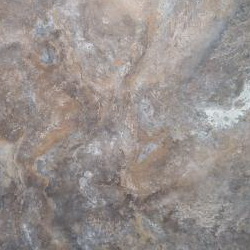
.
Silver Travertine
Iranian travertines are mostly white, beige and brown, but there are also dark travertines that make them particularly attractive. Silver travertine is one of the leading Iranian travertines with its silver to grey background. The main travertine quarries are located in the cities of Takab, Azarshahr and Kashan. The presence of veins or light and dark layers is one of the important indicators of silver travertine that's beauty to this stone. In the following, the different properties of silver travertine are examined.
Physical, textural and chemical characteristics of silver travertine:
Silver travertine background has a range of light silver to tan colors. The dark and light smoky background color with beautiful waves and streaks of white, black, silver and sometimes brown, has increased the beauty of silver travertine. But what is the reason for creating such colors in the layering of Travertine Silver?
Travertine is a stone that forms around hot springs and sometimes rivers. In general, travertine is considered as a sedimentary stone and non-marine carbonate that is formed in arid intercontinental environments. Hot water, which is also acidic, dissolves various rocky parts in its path. Most of these rocks are carbonate, so the predominant chemical composition in hydrothermal solutions will also be carbonate. However, dissolution of ferrous compounds may also occur. Occasionally there are dark, carbonaceous organic matter in rocks that dissolve in hot solutions. Therefore, the background color of silver travertine is the result of a combination of iron and carbon, although other elements such as manganese can be traced in small amounts in the chemical composition of this stone. The darker the layers of silver travertine, the higher the percentage of iron and carbon.
Silver travertine is processed in two types, cross cut and vein cut. There are different types of veins, which are basically travertine layers during rock formation. Some of waves are regular and straight and some of them are irregular. The colors of the layers are also different, some with similar color scheme and some colors with high tolerance. straight wave types with light titanium color are more expensive.
Physical and mechanical characteristics of silver travertine
Silver travertine stone has almost the same physical and mechanical properties as other travertines. This stone has relatively little porosity; Small-scale cavities can be seen in the texture, the existence of which is considered as an advantage in various ways:
1) The presence of these cavities in the stone installation process causes the connection of cement mortar with the stone in the facade to be well formed and the separation of the stone from the facade is less.
2) The presence of cavities reduces the density (weight per unit volume) of silver travertine. This means that the stone is relatively light and this is considered as an advantage in facade cladding; In this way, this stone can be used in the high parts of facade.
3) The relative insulation of silver travertine against sound and heat is the result of cavities in the texture of this stone. Sound waves and heat convective currents pass slowly through the cavities, so the larger the cavities, the better the insulation.
4) These cavities, because they are large in size and visible, repel the destructive effects of water freezing and crystallization of various salts. Therefore, the use of silver travertine in cold regions that have cold seasons, can be appropriate and the stone will last well in these conditions.
Another issue to consider is the discoloration of silver travertine under direct sunlight. The dark silver to tan background of this stone can change color and lose its original quality. For this reason, the use of this stone in the exterior of the building in tropical areas is not recommended. On the other hand, although this stone absorbs more water than denser travertines, its dark background prevents stains and mass from appearing on its appearance; Therefore, using silver travertine in humid environments can be a good option.
The compressive, tensile and flexural strengths of silver travertine depend on the cutting direction of it. Since some of their layers can play the role of mechanical weakness levels, they reduce the cohesiveness of the stone and thus may reduce the strength. But in cross cut types of silver travertine is more resistant. Therefore, the use of vein cut silver travertine in situations that are under constant stress is not recommended unless the thickness of the stone is thicker or its dimensions are smaller.
The most important applications of silver travertine:
1- Facade (except for cities that have a lot of sunlight, such as desert cities)
2- interior and exterior walls
3- exterior floor
3- Landscaping



